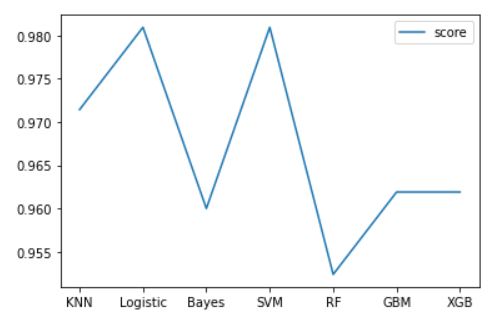1
2
3
4
5
6
7
8
9
10
11
12
13
14
15
16
17
18
19
|
from sklearn.linear_model import LogisticRegression
model_logistic = LogisticRegression()
param_grid = [
{'penalty' : ['l1', 'l2', 'elasticnet', 'none'],
'C' : [0.01, 0.1, 1, 10, 100],
'solver' : ['lbfgs','newton-cg','liblinear','sag','saga'],
'max_iter' : [1000]
}
]
grid_search = GridSearchCV(model_logistic, param_grid, cv=5,
scoring="accuracy", n_jobs=1)
grid_search.fit(train_X, train_y)
print(grid_search.best_params_)
print(grid_search.best_score_)
logistic_grid_search = grid_search
# {'C': 10, 'max_iter': 1000, 'penalty': 'l1', 'solver': 'saga'}
# 0.980952380952381
|

